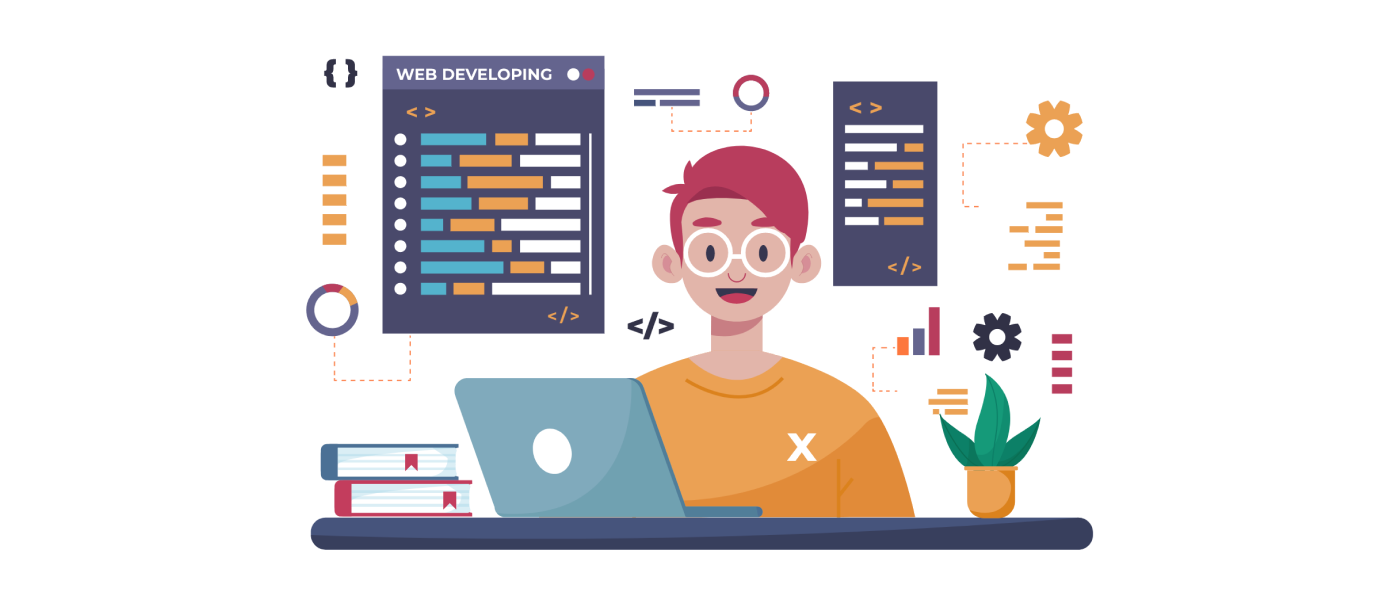Backend Development: Behind-the-Scenes Magic
Behind-the-Scenes Magic
In the realm of web technologies, while frontend development captures the user’s attention with captivating interfaces, backend development powers the behind-the-scenes magic that makes web applications functional and dynamic. It’s the backbone of web development, managing server-side logic, databases, and more. In this comprehensive guide, we’ll delve into the world of backend development, shedding light on the crucial role it plays in web applications. By the end of this article, you’ll have a clear understanding of the magic happening behind the scenes of your favorite web apps.

Introduction to Backend Development
Backend development, often referred to as server-side development, is the process of creating and maintaining the server-side of web applications. It focuses on managing data, logic, and ensuring the functionality of web applications.
The Role of Backend Development in Web Applications
Data Management and Storage
Backend development handles the storage and retrieval of data from databases, ensuring that web applications can store and access information efficiently.
Server-Side Logic
Backend developers write server-side code that processes requests from the frontend, performs calculations, and manages the application’s core functionality.
Backend Technologies
Server-Side Languages (Node.js, Python, Ruby, etc.)
Backend developers use a variety of programming languages, such as Node.js, Python, Ruby, and more, to build server-side logic.
Databases (SQL vs. NoSQL)
Databases play a critical role in backend development. Developers choose between SQL and NoSQL databases based on the project’s requirements.
Server Frameworks (Express, Django, Ruby on Rails, etc.)
Frameworks like Express (Node.js), Django (Python), and Ruby on Rails (Ruby) provide pre-built tools and structures to streamline backend development.
Data Handling and Storage
Structured Data with SQL
SQL databases are used for structured data storage, ideal for applications that require strict data consistency.
Flexible Data with NoSQL
NoSQL databases, on the other hand, offer flexibility and scalability, making them suitable for applications with evolving data needs.
API Development
RESTful APIs
Backend developers create RESTful APIs to allow communication between the frontend and backend, enabling data retrieval and manipulation.
GraphQL
GraphQL is an alternative to RESTful APIs, offering more flexibility by allowing clients to request exactly the data they need.
Authentication and Security
User Authentication
Backend developers implement user authentication mechanisms to ensure secure access to web applications.
Data Protection and Encryption
Data protection measures, including encryption, are crucial for safeguarding sensitive user information.
Scalability and Performance
Load Balancing
Load balancing distributes incoming traffic across multiple servers, ensuring scalability and high availability.
Caching
Caching techniques improve web application performance by storing frequently accessed data for faster retrieval.
Testing and Debugging
Unit Testing
Unit testing verifies that individual components of the backend code work correctly, ensuring reliability.
Debugging Tools
Backend developers use debugging tools to identify and fix issues in the server-side code efficiently.
Monitoring and Logging
Error Handling
Proper error handling and logging practices help diagnose and resolve issues in web applications.
Performance Monitoring
Monitoring tools track server performance and identify areas for optimization.
Deployment and DevOps
Continuous Integration/Continuous Deployment (CI/CD)
CI/CD pipelines automate testing and deployment processes, enabling efficient code delivery.
Containerization (Docker)
Containerization with Docker simplifies application deployment by packaging applications and their dependencies.
Backend as a Service (BaaS)
Third-Party Services (AWS, Firebase, Heroku, etc.)
BaaS platforms provide pre-built backend services, simplifying backend development and infrastructure management.
BaaS Benefits and Considerations
Backend developers evaluate the benefits and considerations of using third-party BaaS platforms.
Serverless Computing
Event-Driven Architectures
Serverless computing relies on event-driven architectures, where functions are executed in response to events.
Advantages of Serverless
Serverless architectures offer scalability, cost-efficiency, and simplified infrastructure management.
Challenges and Pitfalls
Scalability Challenges
Backend developers must address scalability challenges to ensure web applications can handle increased user loads.
Security Risks
Security risks, including data breaches and unauthorized access, require robust security measures.
Future Trends in Backend Development
Stay ahead in backend development by exploring future trends such as serverless computing, event-driven architectures, and edge computing.
Conclusion: The Power Behind Web Apps
Backend development is the unseen force that powers web applications, ensuring they function seamlessly and securely. It involves managing data, implementing server-side logic, and connecting the frontend to databases and services. As you dive into the world of web technologies, remember that the magic of web applications happens behind the scenes, in the capable hands of backend developers. Continue exploring, learning, and mastering the art of backend development to create robust and efficient web applications.






